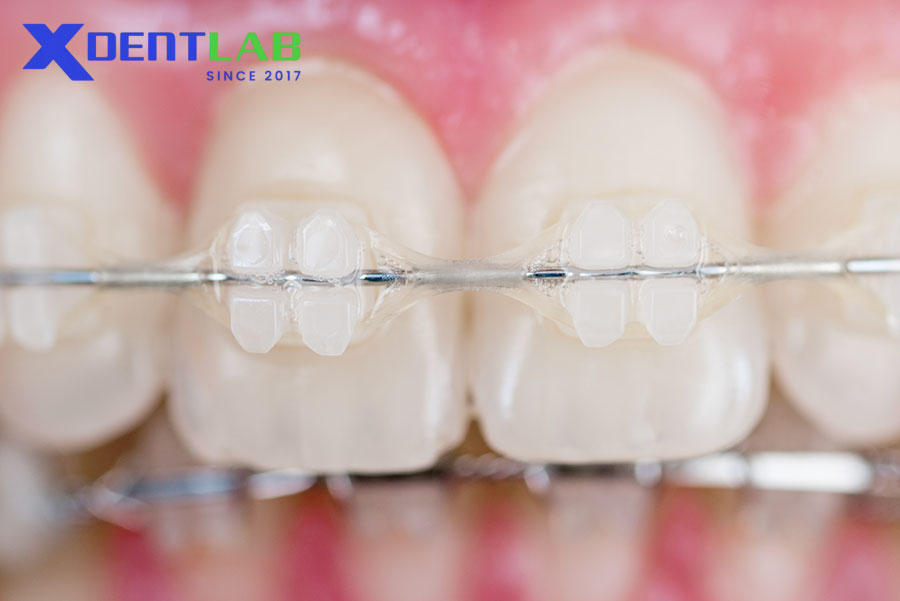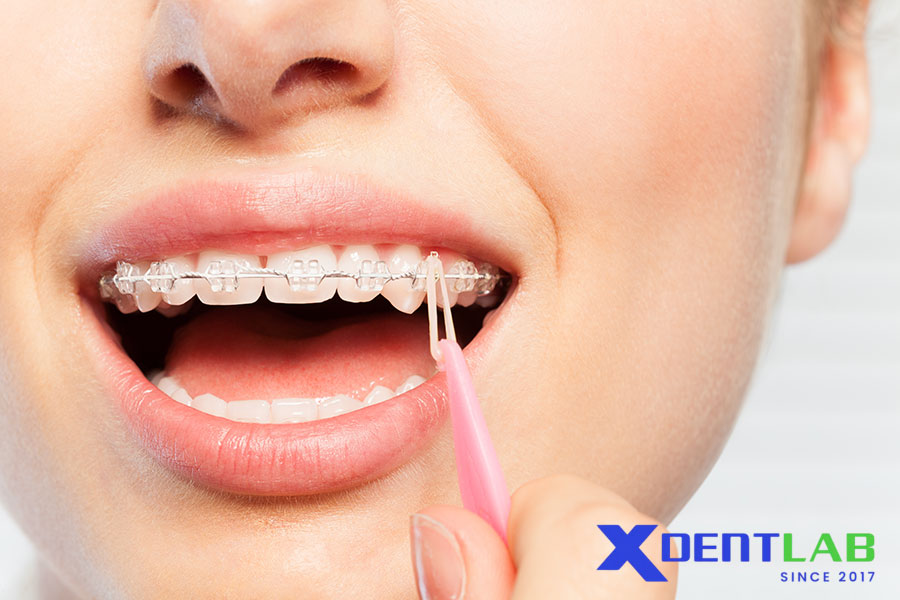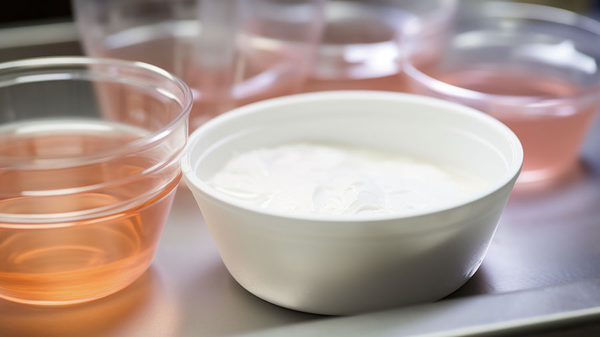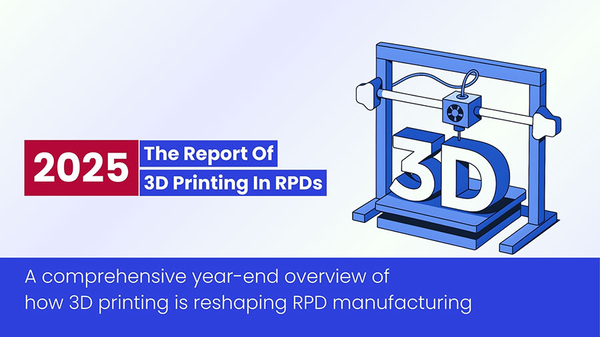Ceramic brackets provide superior aesthetics and biocompatibility for orthodontic patients. Dive into their types, materials, and clinical uses.

Table of contents [Show]
Ceramic brackets have revolutionized orthodontic treatment by providing an aesthetically pleasing alternative to traditional metal brackets. These brackets are primarily composed of aluminum oxide (alumina) materials, which offer a combination of strength, biocompatibility, and aesthetic appeal. Available in two main types—polycrystalline and monocrystalline variants—ceramic brackets cater to diverse patient needs and clinical scenarios. This article explores the materials, types, and clinical applications of ceramic brackets, as well as recent advancements in their design and functionality.
Types of Ceramic Brackets
Polycrystalline Alumina Brackets
Polycrystalline brackets are crafted by combining aluminum oxide particles with a binder, which is then molded into bracket shapes and fused at high temperatures. This process results in a bracket composed of multiple small aluminum oxide crystals.
Key Characteristics:
Appearance: These brackets have a semi-translucent to opaque white look, making them blend well with natural teeth.
Strength: Known for their durability, polycrystalline brackets can withstand the forces applied during orthodontic treatment.
Cost: More affordable than monocrystalline alternatives, making them a popular choice for patients seeking an aesthetic solution without a premium price tag.
Clinical Performance: These brackets provide reliable force transmission and effective interaction with orthodontic wires, ensuring efficient treatment outcomes.
Monocrystalline Sapphire Brackets
Monocrystalline brackets, often referred to as sapphire brackets, are manufactured from a single crystal of aluminum oxide, also known as synthetic sapphire. The single-crystal structure gives these brackets unique optical and mechanical properties.
Key Characteristics:
Appearance: Their high translucency allows them to blend seamlessly with the natural color of teeth, making them nearly invisible.
Manufacturing: The process involves growing a single crystal and shaping it into brackets, which requires advanced technology and precision.
Aesthetics: Superior light transmission properties make these brackets the most aesthetic option available.
Cost: Due to the complexity of their manufacturing process, monocrystalline brackets are generally more expensive than polycrystalline ones.
Material Composition and Properties

Ceramic brackets are primarily made from aluminum oxide, whether in polycrystalline or monocrystalline form. This material provides the following advantages:
Chemical Inertness: Resistant to staining and degradation from oral fluids, ensuring long-lasting aesthetics.
Biocompatibility: Non-toxic and safe for use in the oral cavity, making them suitable for patients with sensitivities or allergies to metals.
Color Stability: Unlike some materials, ceramic brackets maintain their appearance throughout the treatment period.
Hardness: The high surface hardness of ceramic materials ensures durability, although it can increase the risk of wear on opposing teeth or wires.
Recent Developments in Ceramic Brackets
Zirconia-Based Brackets
Recent advancements in orthodontic materials have introduced zirconia-based ceramic brackets (ZrO₂), which offer enhanced mechanical properties compared to traditional alumina-based ceramics.
Advantages of Zirconia Brackets:
Fracture Resistance: Zirconia provides superior toughness, reducing the risk of bracket failure during treatment.
Improved Durability: These brackets are less prone to chipping or breaking under stress.
Enhanced Aesthetics: Zirconia brackets exhibit excellent translucency and color stability, making them appealing to patients.
These innovations address some of the limitations of earlier ceramic brackets, such as brittleness and susceptibility to tie-wing breakage, making zirconia-based options a promising alternative for orthodontic treatment.
Clinical Considerations
Advantages of Ceramic Brackets
Aesthetic Appeal: Ceramic brackets are ideal for patients who prioritize discreet orthodontic treatment.
Biocompatibility: The materials used are safe and non-irritating to oral tissues, making them suitable for patients with allergies to metals.
Color Stability: Ceramic brackets resist staining, maintaining their aesthetic appearance throughout the treatment period.
Metal-Free Option: Ideal for patients with sensitivities or preferences for non-metal orthodontic solutions.
Limitations of Ceramic Brackets
Higher Friction: Ceramic brackets tend to have higher friction between the bracket and wire, which can slow down tooth movement in some cases.
Enamel Wear: The hardness of ceramic materials can potentially cause wear on opposing teeth or damage during debonding.
Brittleness: Despite advancements, ceramic brackets are still more prone to fracture under excessive force compared to metal brackets.
Cost: Ceramic brackets are generally more expensive than metal brackets, particularly for monocrystalline options.
Manufacturing Evolution
Since their introduction, ceramic brackets have undergone significant advancements to improve their performance and durability. Early iterations faced challenges such as brittle materials, tie-wing breakage, and high friction levels. Modern manufacturing techniques have addressed these issues through:
Enhanced Material Formulations: Improved alumina and zirconia compositions have increased strength and fracture resistance.
Reinforced Designs: Tie-wings and bracket bases have been optimized to reduce the risk of breakage and improve bonding performance.
Advanced Slot Dimensions: Precise slot engineering minimizes friction and enhances wire interaction for smoother tooth movement.
Better Bonding Technology: Base designs now incorporate features that improve adhesion to the tooth surface, reducing the risk of debonding.
Applications of Ceramic Brackets in Orthodontics

Ceramic brackets are widely used in orthodontic treatment for patients seeking a more discreet alternative to traditional metal brackets. They are particularly suitable for:
Adult Patients: Many adults prefer ceramic brackets for their aesthetic appeal during professional or social interactions.
Young Adults and Teenagers: Image-conscious younger patients often opt for ceramic brackets to avoid the metallic appearance of traditional braces.
Patients with Metal Allergies: Ceramic brackets provide a hypoallergenic option for individuals sensitive to metals.
Mild to Moderate Malocclusions: Ceramic brackets are effective for most orthodontic cases, though severe cases may benefit from the strength of metal brackets.
Conclusion
Ceramic brackets have become a cornerstone of modern orthodontic treatment, offering a balance between aesthetics, functionality, and biocompatibility. Whether choosing polycrystalline alumina for its affordability and strength or monocrystalline sapphire for its superior aesthetics, patients and orthodontists alike can benefit from the versatility of these brackets.
With ongoing advancements in materials, such as zirconia-based ceramics, the future of ceramic brackets looks promising. These innovations continue to address the limitations of earlier designs, ensuring that patients receive durable, aesthetic, and effective orthodontic solutions.
For dental practices seeking high-quality and cost-effective solutions, XDENT LAB offers state-of-the-art ceramic brackets manufactured to meet FDA and ISO standards. With our commitment to quality, consistency, and global service, we are your trusted partner in delivering exceptional orthodontic care.
XDENT LAB is an expert in Lab-to-Lab Full Service from Vietnam, with the signature services of Removable & Implant, meeting U.S. market standards – approved by FDA & ISO. Founded in 2017, XDENT LAB has grown from local root to global reach, scaling with 2 factories and over 100 employees.. Our state-of-the-art technology, certified technicians, and commitment to compliance make us the trusted choice for dental practices looking to ensure quality and consistency in their products.

Our commitments are:
100% FDA-Approved Materials.
Large-Scale Manufacturing, high volume, remake rate < 1%.
2~3 days in lab (*digital file).
Your cost savings 30%.
Uninterrupted Manufacturing 365 days a year.
Contact us today to establish a strategy to reduce operating costs.
--------❃--------
Vietnam Dental Laboratory - XDENT LAB
🏢 Factory 1: 95/6 Tran Van Kieu Street, Binh Phu Ward, Ho Chi Minh City, Vietnam
🏢 Factory 2: Kizuna 3 Industrial Park, Can Giuoc Commune, Tay Ninh Province, Vietnam
☎ Hotline: 0919 796 718 📰 Get detailed pricing
Share this post:





